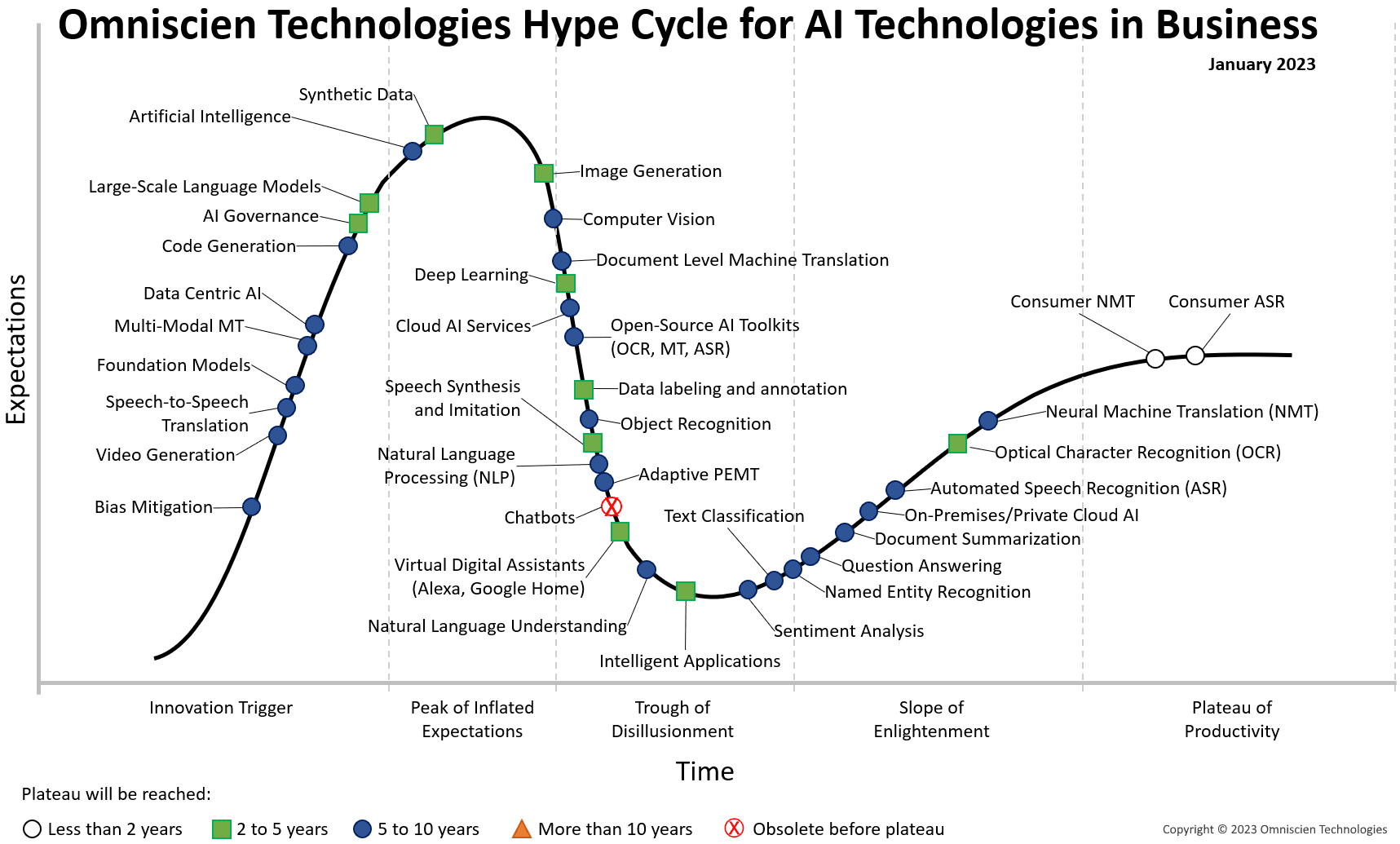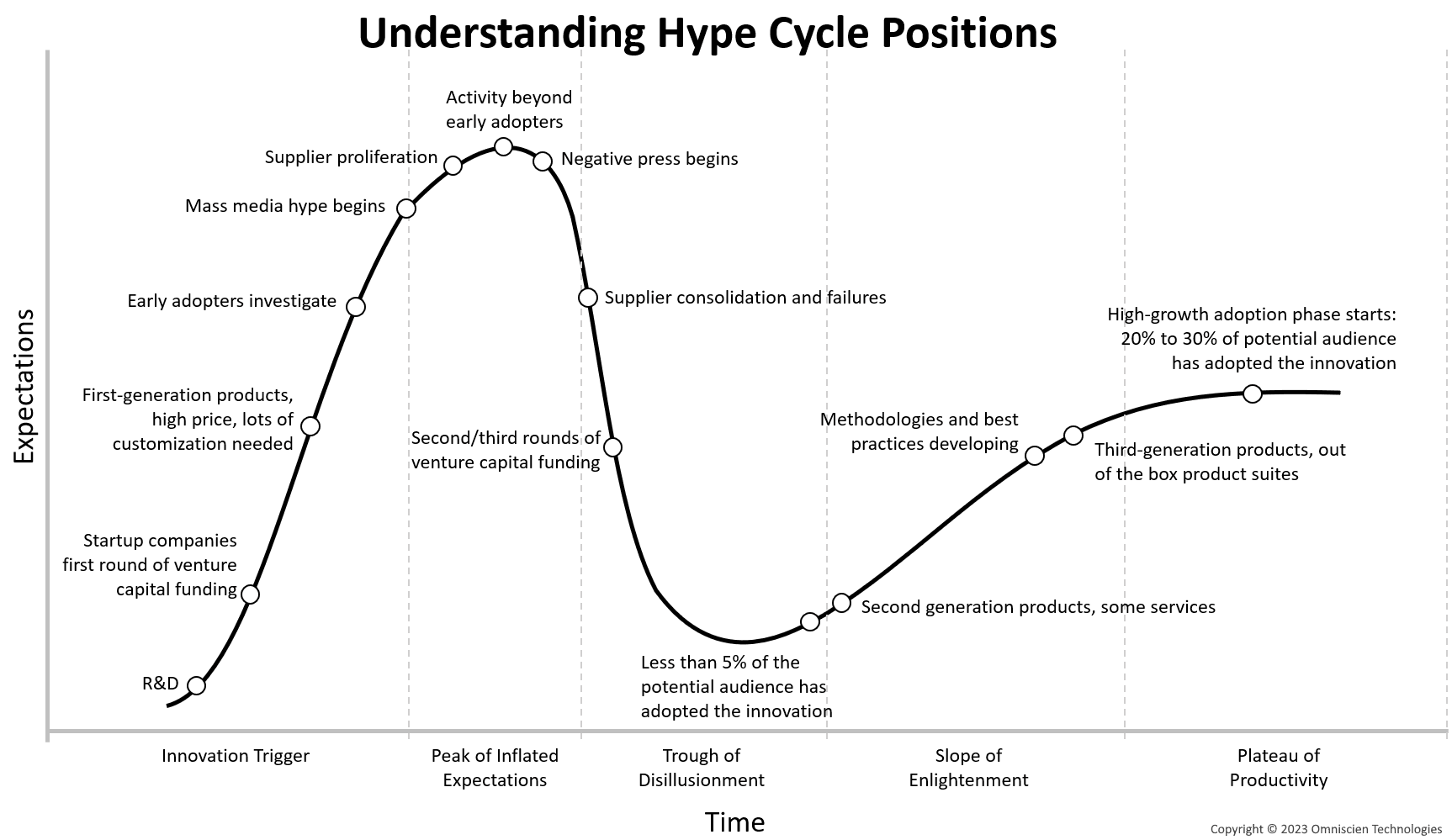By Dion Wiggins
During my time and Vice President and Research Director at Gartner, many approaches were used to analyze technology and the impact that it would have on business. Since leaving Gartner in 2006, I have often looked at approaches that were used and plotted them for personal use.
Recently, Professor Philipp Kohen and I were discussing the hype and other factors relating to Artificial Intelligence (AI) with respect to language processing. The hype, reality and misconceptions with AI technologies are significant. We thought that it would be interesting to see where the Omniscien team collectively thought the various technologies would be plotted using the Hype Cycle approach that Gartner pioneered.
We got together and analyzed the various relevant technologies, and their real world uses in the context of business. Many technologies have matured from a consumer perspective such as voice recognition and machine translation on your phone. That does not always correlate to being mature for enterprise use. Many additional concerns such as data privacy need to be considered.
The Hype Cycle below is the collective view of the Omniscien team on their currently level of maturity for use within business. We welcome any comments and feedback.

- Hype cycles provide a graphical and conceptual representation that represent the maturity, adoption, and social application of specific technologies.
- “Good” technologies will go through the Hype Cycle and emerge on the other side.
- Each technology travels at a different speed, which is represented by the icon shape.
- Any position on the hype cycle is not “bad”. It is a reflection of the maturity of the technology.
-
Although a technology may reach the Plateau of Productivity, that does not mean that it is necessarily finished.For example, Machine Translation and the processing of natural language is one of the most complex problems in AI. To be truly mature, it requires an accurate modeling of reality in order to work. Thus it is much more complex than any other narrow AI. What the Plateau of Productivity does represent is that 20%-30% of the potential audience for such technology has adopted it. Even if there is much more research to go to further improve and enhance the technology.

**For clarity, this hype cycle was not created by or have any relationship to Gartner beyond utilizing the same approach to graphically represent information.

